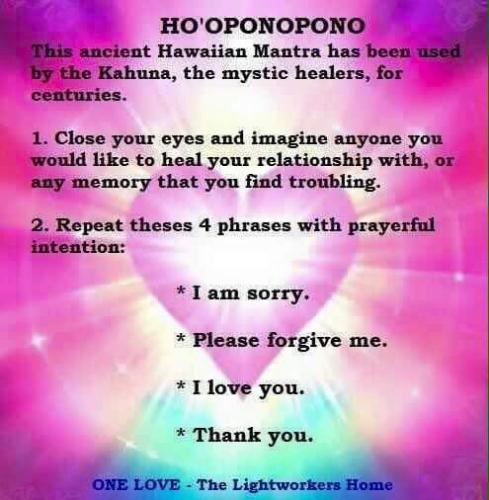So you’ve experienced a rocky past relationship, filled with hurtful words and bitter memories. Wondering if there is a way to mend what’s been broken? Look no further than Ho’oponopono, an ancient Hawaiian practice that offers a unique approach to healing. By taking responsibility for our own role in the relationship, addressing old wounds, and ultimately forgiving ourselves and others, Ho’oponopono has the potential to bring about transformative healing. This article explores the power of Ho’oponopono and its potential for healing past relationships, offering insight into how this practice can help you find closure and move forward with a renewed sense of peace.

Understanding Ho’oponopono
Ho’oponopono is a traditional Hawaiian healing practice that aims to restore harmony and balance in relationships. The term “Ho’oponopono” can be broken down into two parts: “ho’opono” meaning to make right or correct, and “pono” meaning righteousness. This ancient practice is deeply rooted in Hawaiian culture and is based on the belief that unresolved conflicts and emotional baggage can affect our well-being and relationships.
Origins and Meaning of Ho’oponopono
Ho’oponopono has its origins in the ancient Hawaiian culture and has been practiced for generations. In the traditional context, it was primarily used to resolve conflicts within families or communities. The purpose of Ho’oponopono is to bring individuals together to address unresolved issues, express emotions, seek forgiveness, and restore harmony in relationships.
At its core, Ho’oponopono is about taking personal responsibility for our actions and the impact they have on others. It recognizes that we are all interconnected and that healing past relationships requires acknowledging and addressing our own role in the conflict.
Principles and Beliefs of Ho’oponopono
The principles and beliefs of Ho’oponopono are deeply rooted in Hawaiian spirituality and culture. Some key principles include:
-
Unity and Connection: Ho’oponopono emphasizes the interconnectedness of all beings. It recognizes that our well-being is directly tied to the well-being of others, and that healing relationships requires a sense of unity and connection.
-
Responsibility and Accountability: Ho’oponopono emphasizes taking personal responsibility for our actions and their impact on others. It encourages individuals to acknowledge their role in past conflicts and seek forgiveness.
-
Forgiveness and Reconciliation: Ho’oponopono emphasizes the importance of forgiveness and reconciliation. It emphasizes the power of forgiveness to heal past wounds and restore harmony in relationships.
-
Love and Compassion: Ho’oponopono promotes love, compassion, and empathy towards oneself and others. It recognizes that healing relationships requires cultivating a deep sense of understanding and compassion.
-
Harmony and Balance: Ho’oponopono seeks to restore harmony and balance in relationships. It aims to address underlying issues, release negative energy, and create a space for open communication and understanding.
Healing Past Relationships with Ho’oponopono
Healing past relationships with Ho’oponopono involves a process of self-reflection, taking responsibility, seeking forgiveness, releasing negative emotions, and rebuilding trust and communication. This practice can be a powerful tool for addressing unresolved conflict, healing emotional wounds, and transforming negative patterns in relationships.
Recognizing and Acknowledging Past Relationship Issues
The first step in healing past relationships with Ho’oponopono is recognizing and acknowledging the issues that need to be addressed. This involves reflecting on past conflicts, unresolved emotions, and the role you played in the relationship dynamics. It requires a willingness to be honest with yourself and take ownership of your actions.
Taking Responsibility for One’s Role in the Relationship
Once you have recognized the issues, the next step is taking responsibility for your role in the relationship. This involves acknowledging your own contributions to the conflicts and understanding how your actions may have impacted the other person. It requires humility and a willingness to admit mistakes and apologize.
Apologizing and Seeking Forgiveness
Apologizing and seeking forgiveness is a crucial part of the healing process in Ho’oponopono. It involves reaching out to the other person, expressing remorse for any harm caused, and genuinely seeking their forgiveness. This step requires vulnerability and a sincere desire to make amends.
Releasing Negative Energy and Emotions
To fully heal past relationships, it is important to release negative energy and emotions that may be holding you back. Ho’oponopono offers various techniques for releasing negative energy, such as practicing forgiveness, using affirmations, or engaging in meditation and visualization exercises. These techniques can help you let go of resentment, anger, and hurt, and create space for healing and growth.
Creating Positive Affirmations and Intentions
Creating positive affirmations and intentions is another key step in using Ho’oponopono to heal past relationships. Affirmations are powerful tools for reprogramming our subconscious mind and shifting our thought patterns. By intentionally focusing on positive qualities, intentions, and outcomes, we can cultivate healthier beliefs and behaviors in our relationships.
Rebuilding Trust and Communication
Rebuilding trust and communication is essential in healing past relationships. This involves establishing open and honest lines of communication, actively listening to the other person’s perspective, and working together to rebuild trust. It requires patience, empathy, and a commitment to understanding and honoring each other’s needs.
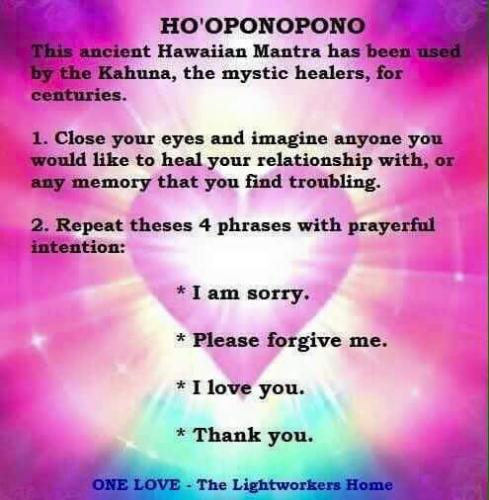
Steps to Practice Ho’oponopono for Healing Past Relationships
Now that we understand the principles and beliefs of Ho’oponopono, let’s explore the practical steps involved in practicing this ancient healing technique to heal past relationships.
Step 1: Self-Reflection and Self-Forgiveness
The first step in practicing Ho’oponopono is self-reflection and self-forgiveness. Take time to reflect on your past actions and behaviors in the relationship. Ask yourself honestly how your actions might have contributed to the conflict or the breakdown of the relationship. Be compassionate with yourself and forgive yourself for any mistakes or shortcomings.
Step 2: Identifying the Relationship to Heal
Once you have taken the time to reflect on your own actions, identify the specific relationship you want to heal. It could be a romantic relationship, a friendship, a family relationship, or any other significant connection. Recognize the unresolved issues, emotions, and conflicts within this relationship that need healing.
Step 3: Reciting Ho’oponopono Mantras and Prayers
In this step, start reciting Ho’oponopono mantras and prayers to release negative energy and promote healing in the relationship. One popular mantra is: “I’m sorry, please forgive me, thank you, I love you.” Repeat this mantra, holding the intention of healing and reconciliation in the relationship. You can also create your own personalized mantra or prayer that resonates with you.
Step 4: Visualizations and Meditations
Visualizations and meditations can be powerful tools for healing past relationships with Ho’oponopono. Close your eyes and visualize the person you want to heal your relationship with. Imagine a bubble of healing and love surrounding both of you. See the conflicts and negative energy dissolving, and feel the emotions of forgiveness and compassion filling the space between you. Engage in this visualization practice regularly to strengthen the healing process.
Step 5: Commitment to Continuous Healing
Healing past relationships is not a one-time event; it is an ongoing process. Make a commitment to continuous healing and growth. Be open to seeking support from others, such as therapists, counselors, or Ho’oponopono practitioners, if needed. Remember that healing takes time, and patience and perseverance are vital in this journey.
Benefits of Using Ho’oponopono for Healing Past Relationships
Now that we have explored the process of using Ho’oponopono to heal past relationships, let’s delve into the potential benefits this practice can offer.
Healing Emotional Wounds and Trauma
Ho’oponopono provides a space for healing emotional wounds and trauma that may have been present in past relationships. By addressing and releasing negative emotions and energy, individuals can experience a sense of relief, restoration, and emotional well-being.
Improving Self-Awareness and Self-Responsibility
Practicing Ho’oponopono requires deep self-reflection and taking responsibility for one’s actions, thoughts, and emotions. This process fosters increased self-awareness and self-responsibility, enabling individuals to better understand their own patterns, behavior, and triggers in relationships. This self-awareness can pave the way for positive changes and growth.
Transforming Negative Patterns and Behaviors
Through Ho’oponopono, individuals can transform negative patterns and behaviors that may have contributed to relationship issues. By consciously acknowledging these patterns and actively working towards change, individuals can create healthier dynamics and communication styles in their relationships.
Strengthening Empathy and Compassion
Ho’oponopono cultivates empathy and compassion towards oneself and others. By understanding and embracing the interconnectedness of all beings, individuals can develop a deeper sense of empathy and compassion for the other person’s experience and perspective. This can lead to increased understanding and connection within the relationship.
Enhancing Personal Growth and Development
Engaging in the healing process with Ho’oponopono can be a catalyst for personal growth and development. It encourages individuals to reflect, learn, and evolve from past experiences, ultimately fostering personal transformation and growth. This growth can positively impact not only current relationships but also future connections.
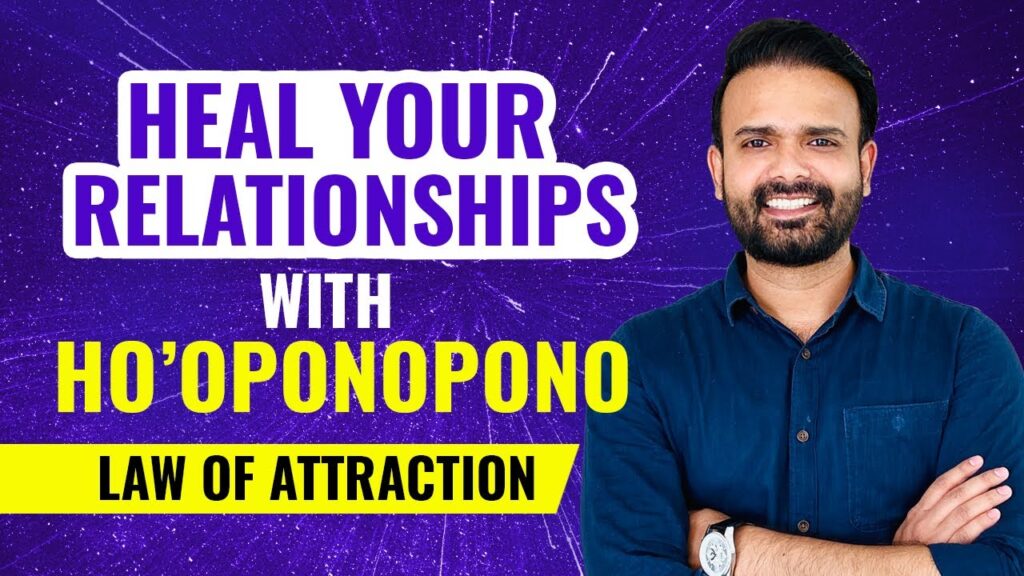
Challenges and Limitations of Ho’oponopono in Healing Past Relationships
While Ho’oponopono can be a powerful tool for healing past relationships, it is important to acknowledge its challenges and limitations.
Resistance to Personal Responsibility
One of the challenges individuals may face when practicing Ho’oponopono is resistance to taking personal responsibility for their role in the relationship. It can be difficult to acknowledge mistakes and shortcomings, and some may find it easier to shift blame onto others. Overcoming this resistance is crucial for the healing process to unfold.
Unresolved Issues and Complex Dynamics
Ho’oponopono may struggle to fully address deep-rooted and complex issues within relationships, especially in cases where unresolved trauma or deeply ingrained patterns are involved. In such situations, seeking additional support from professionals, such as therapists or counselors, may be necessary.
Reconciliation vs. Moving On
There can be a delicate balance between seeking reconciliation and moving on from a relationship. Ho’oponopono aims to heal past relationships, but sometimes the best course of action may be to let go and move forward without reestablishing the connection. It is important to assess whether the relationship is healthy and beneficial to both parties before embarking on the healing process.
External Factors and Influences
While Ho’oponopono can significantly impact individual healing, it is important to recognize that external factors and influences may influence the outcome of the healing process. Factors such as the other person’s willingness to participate in the healing journey, external circumstances, and individual paths of growth can all influence the overall success of healing past relationships.
Combining Ho’oponopono with Other Healing Modalities
Ho’oponopono can be complemented by various other healing modalities to further enhance the healing process. Here are a few modalities that can be combined with Ho’oponopono:
Therapy and Counseling
Seeking therapy or counseling can provide additional support and guidance in healing past relationships. A trained professional can help individuals navigate complex emotions, unresolved issues, and facilitate effective communication and healing.
Meditation and Mindfulness Practices
Meditation and mindfulness practices can complement Ho’oponopono by cultivating a sense of inner peace, self-awareness, and emotional resilience. These practices can enhance the overall healing process and help individuals stay grounded and present in their relationships.
Energy Healing and Reiki
Energy healing modalities, such as Reiki, can work synergistically with Ho’oponopono to promote healing and release stuck energy. These modalities can address energetic blockages and imbalances, supporting the overall healing process.
Journaling and Self-Reflection
Journaling and self-reflection provide a platform for individuals to explore their emotions, thoughts, and experiences in more depth. This practice can complement Ho’oponopono by fostering self-awareness, clarity, and insights into the healing journey.
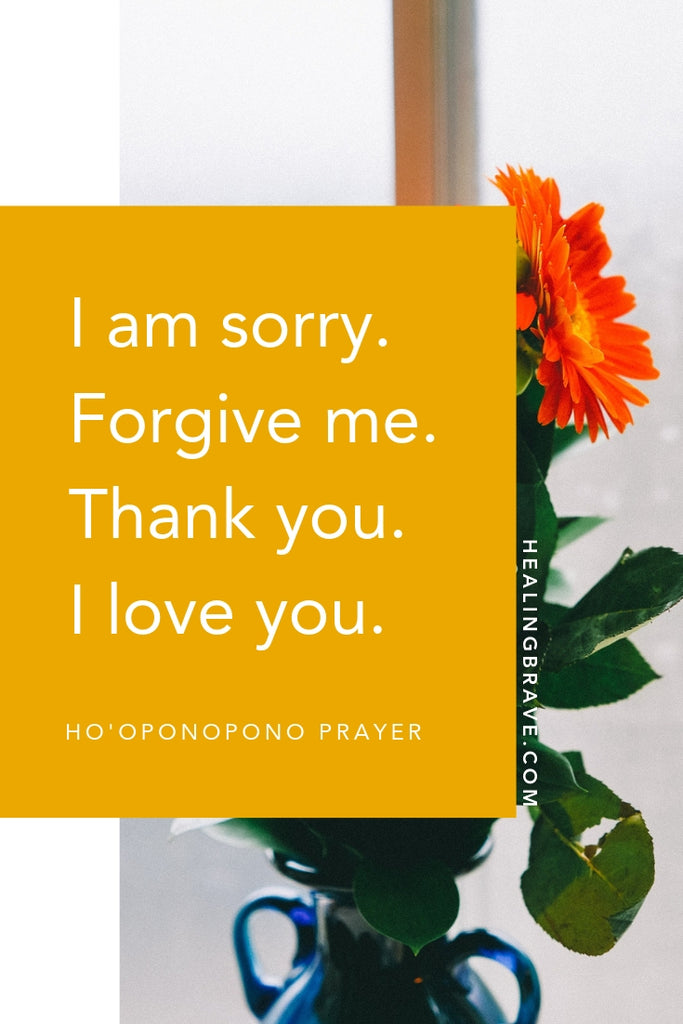
Personal Stories of Healing Past Relationships with Ho’oponopono
Personal stories and case studies can offer insight and inspiration into the potential of Ho’oponopono in healing past relationships. Let’s explore a few examples:
Case Study 1: Healing a Broken Family Relationship
Sarah had a strained relationship with her father for many years. Through Ho’oponopono, she embarked on a healing journey by taking responsibility for her own actions and seeking forgiveness. With regular mantra repetition and deep reflection, Sarah was able to release resentment and develop a newfound understanding and empathy towards her father. Their relationship gradually healed and grew stronger over time.
Case Study 2: Reconnecting with a Former Partner
John and Emily had a difficult breakup and were unable to communicate or move forward. They decided to practice Ho’oponopono individually to heal their own wounds and release negative energy. After some time, they realized their desire to reconnect and heal their relationship. Through open communication, sincere apologies, and a commitment to growth, they were able to rebuild trust and create a healthier and more loving connection.
Case Study 3: Resolving Conflict and Jealousy in a Friendship
Alex and Lisa had been friends for years but had recently experienced conflicts and jealousy. They turned to Ho’oponopono to address the underlying issues and restore harmony in their friendship. By engaging in deep self-reflection, apologies, and forgiveness, they were able to confront their insecurities, communicate openly, and rebuild trust. Their friendship became stronger as a result of their commitment to healing and growth.
Critics and Skeptics of Ho’oponopono for Healing Relationships
As with any healing practice, Ho’oponopono has its critics and skeptics. Let’s explore some common criticisms and alternative perspectives:
Cultural Appropriation and Misinterpretation
Critics argue that Ho’oponopono has been misappropriated and commercialized outside of its cultural context. They argue that its practice by non-Hawaiians may lack authenticity and disrespect the cultural origins of the practice. It is important to approach Ho’oponopono with cultural sensitivity and respect its roots.
Scientific Validity and Lack of Empirical Evidence
Skeptics question the scientific validity of Ho’oponopono, as empirical evidence is limited. While anecdotal evidence and personal experiences suggest the effectiveness of Ho’oponopono, more research and scientific studies are needed to validate its healing potential.
Alternative Perspectives and Approaches
There are alternative perspectives and healing approaches that may resonate with individuals more than Ho’oponopono. Each person has unique needs and preferences, and it is essential to explore different practices and modalities to find what works best for them.
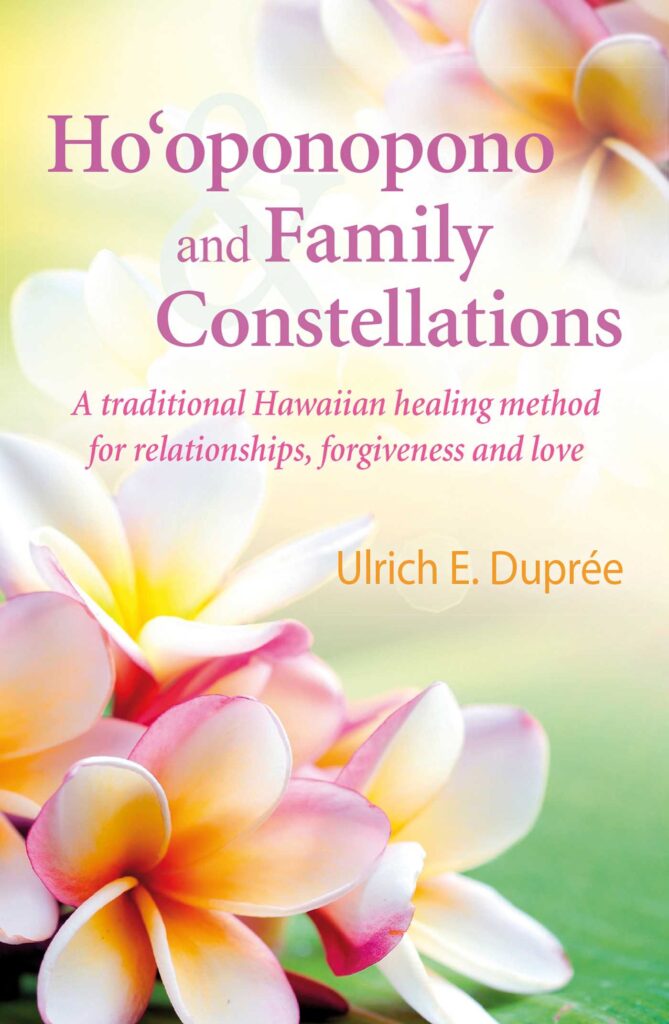
Conclusion: The Potential of Ho’oponopono in Healing Past Relationships
Ho’oponopono offers a profound opportunity for healing past relationships, fostering reconciliation, and promoting personal growth. By embracing the principles of unity, accountability, forgiveness, love, and balance, individuals can embark on a transformative journey of healing and navigate the complexities of relationships. While challenges and limitations exist, when practiced with sincerity and commitment, Ho’oponopono has the potential to create deep healing and restore harmony in relationships.
Resources and Further Reading
For those interested in exploring Ho’oponopono further and incorporating it into their healing journey, here are some recommended resources:
Books and Publications
- “Ho’oponopono: The Hawaiian Forgiveness Ritual as the Key to Your Life’s Fulfillment” by Ulrich Dupree
- “Zero Limits: The Secret Hawaiian System for Wealth, Health, Peace, and More” by Joe Vitale and Ihaleakala Hew Len
- “Ho’oponopono: Contemporary Uses of a Hawaiian Problem Solving Process” by Erika Kaniho
Online Courses and Workshops
- Ho’oponopono Basic I online course by Inner-Voyage College
- Ho’oponopono: The Tools of Forgiveness online workshop by The Ho’oponopono Foundation
- Ho’oponopono Certification Program by Ho’oponopono-PLR
Ho’oponopono Practitioners and Teachers
- Ihaleakala Hew Len
- Morrnah Nalamaku Simeona
- Dr. Hew Len’s Official Ho’oponopono Website
